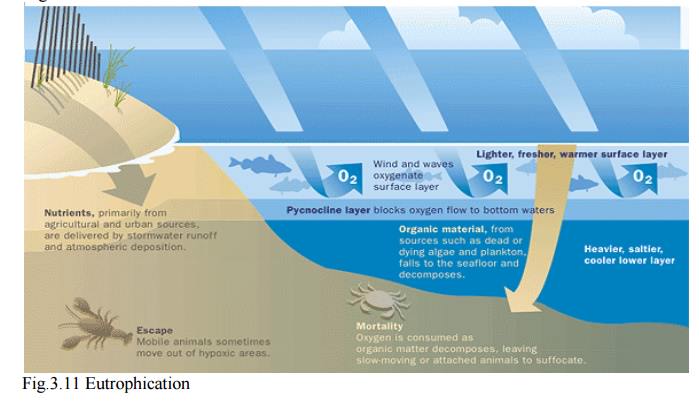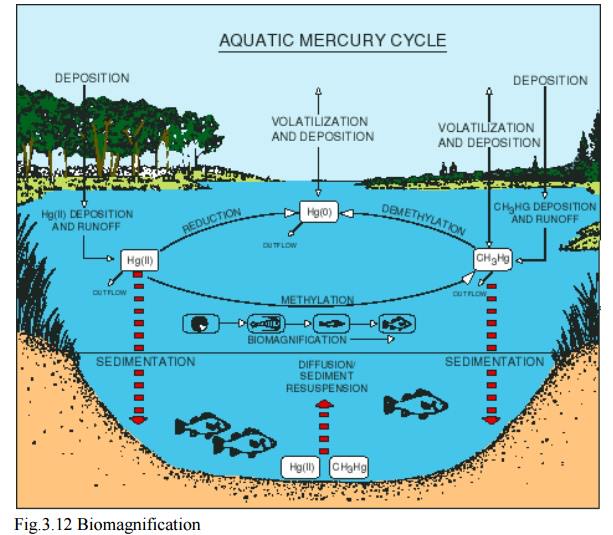Chapter: Environmental Science and Engineering
Food Resources
FOOD RESOURCES
1 World Food Problems
During
the last 50 years world grain production has increased almost three times. The
per capita production is increased by about 50%.
At the
same time population growth increased at such a rate in less developed
countries. Every 40 million people die of undernourishment and malnutrition.
This
means that every year our food problem is killing as many people as were killed
by the atomic bomb dropped on Hiroshima during World War II.
This
statistics emphasize the need to increase our food production, and also to
control population growth.
It is
estimated that 300 millions are still undernourished.
2 Impacts of overgrazing and agriculture
2.1 Overgrazing
Overgrazing
can limit livestock production. Over grazing occurs when too many animals graze
for too long and exceed the carrying capacity of a grass land area.
Impact of overgrazing
Land degradation: Overgrazing
removes the grass cover. The humus content of the soil is decreased and it leads to poor, dry, compacted
soil.
Soil erosion: The soil roots are very good
binders of soil. When the grasses are removed, the soil becomes loose and susceptible to the action of wind and water.
Loss of useful species: Due to
overgrazing the nutritious species like cenchrus, panicum etc. are replaced by thorny plants like
Parthenium, Xanthium etc. These species do not have a good capacity of binding
the soil particles and, therefore, the soil becomes more prone to soil erosion.
2.2 Agriculture
Traditional
Agriculture and its impacts
Usually involves
a small plot
Simple
tools
Naturally
available water
Organic
fertilizer and a mix of crops
2.3 Main impacts
Deforestation
Soil erosion
Depletion
of nutrients
2.4 Modern Agriculture and its impacts
It makes
use of hybrid seeds of selected and single crop variety.
High-tech
equipments, lots of energy subsidies in the form of fertilizers and, pesticides
Irrigation water
2.5 Main impacts
Impacts related to high yielding verities (HYV): The
uses of HYVs encourage monoculture i.e. the
same genotype is grown over vast areas. In case of an attack by some
pathogen, there is total devastation of the crop by the disease due to exactly
uniform conditions, which help in rapid spread of the disease.
3 Fertilizer related problems
Micronutrient imbalance: Chemical
fertilizers have nitrogen, phosphorus and potassium (N, P and K) which are essential macronutrients.
Excessive use of fertilizers cause micronutrient imbalance. For example,
excessive fertilizer use in Punjab and Haryana has caused deficiency of the
micronutrient Zinc in the soils, which is affecting productivity of the soil.
Nitrate Pollution: Nitrogenous fertilizers applied
in the fields often leach deep into the soil and ultimately contaminate the ground water. The nitrates get
concentrated in the water and when their concentration exceeds 25 mg/L, they
become the cause of a serious health hazard called "Blue Baby
Syndrome" or methaemoglobinemia.
This disease affects the infants to the maximum extent causing even death.

Eutrophication: A large proportion of nitrogen
and phosphorus used in crop fields is washed off along with runoff water and reach the water bodies causing over
nourishment of the lakes, a process known as Eutrophication. (Eu=more, tropic=nutrition). Due to Eutrophication
the lakes get invaded by algal blooms. These algal species grow very fast by
rapidly using up the nutrients. The algal species quickly complete their life
cycle and die thereby adding a lot of dead matter. The fishes are also killed
and there is lot of dead matter that starts getting decomposed. Oxygen is
consumed in the process of decomposition and very soon the water gets depleted
of dissolved oxygen. This further affects aquatic fauna and ultimately
anaerobic conditions are created where only pathogenic anaerobic bacteria can
survive. Thus, due to excessive use of fertilizers in the agricultural fields
the lake ecosystem gets degraded.

Pesticide related problems:
Thousands of types of pesticides are used in agriculture. The first generation pesticides include
chemicals like sulphur, arsenic, lead or mercury to kill the pests. They have
number of side effects as discussed below:
Creating resistance in pests and producing new
pests: About 20 species of pests are now known which have become immune to all types of pesticides and are known
as "Super pests".
Death of non-target organisms: Many
insecticides not only kill the target species but also several non-target species that are useful to
us.
Biological magnification: Many of
the pesticides are non-biodegradable and keep on accumulating in the food chain, a process called
biological magnification. This is very harmful.

Water Logging: Over irrigation of croplands by
farmers for good growth of their crop usually leads to water logging. Inadequate drainage caused excess water to
accumulate underground and gradually forms a continuous column with the water
table. Under water-logged conditions, pore-spaces in the soil get fully
drenched with water and the soil- air gets depleted. The water table rises
while the roots of plants do not get adequate air for respiration, Mechanical
strength of the soil declines, the crop plants get lodged and crop yield falls.
In Punjab and Haryana, extensive areas have become water-logged due to adequate
canal water supply or tube-well water. Preventing excessive irrigation,
sub-surface drainage technology and bio-drainage with trees like Eucalyptus are
some of the remedial measures to prevent water-logging.
Salinity Problem: At present one third of the
total cultivable land area of the world is affected by salts. Saline soils are characterized by the accumulation of
soluble salts like sodium chloride, sodium sulphate, calcium chloride,
magnesium chloride etc. in the soil profile. Their electrical conductivity is
more than 4 ds/m. So dic soils have carbonates and bicarbonates of sodium, the
pH usually exceed 8.0 and the exchangeable sodium percentage (ESP) is more than
15%.
3.1 Remedy
(i) The most
common method for getting rid of salts is to flush them out by applying more
good quality water to such soils.
(ii) Another
method is laying underground network of perforated drainage pipes for flushing
out the salts slowly.
4 Case studies
Salinity
and water logging in Punjab, Haryana and Rajasthan:
The first
alarming report of salt-affected wasteland formation due to irrigation
practices came from Haryana in 1858.
Several
villages in Panipat, and Delhi lying in Western Yamuna Canal were suffering
from salinity problems.
The floods
of 1947, 1950, 1952, 1954-55 in Punjab resulted in aggravated water logging
with serious drainage problems.
Introduction
to canal irrigation in 3.3 m ha in Haryana resulted in raise in water table
followed by water-logging and salinity in many irrigated areas as a result of
fall in crop productivity.
Rajasthan
too has suffered badly in this regard following the biggest irrigation project
"Indhra Gandhi Canal Project".
Related Topics